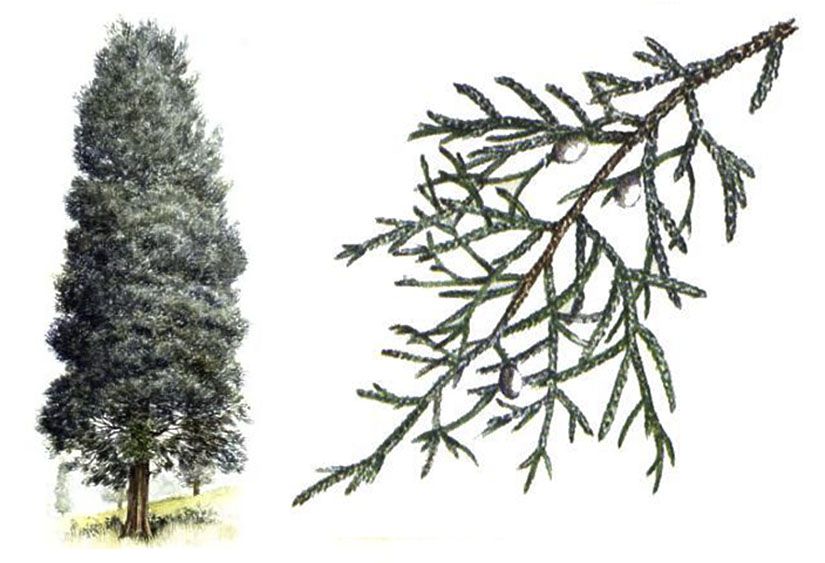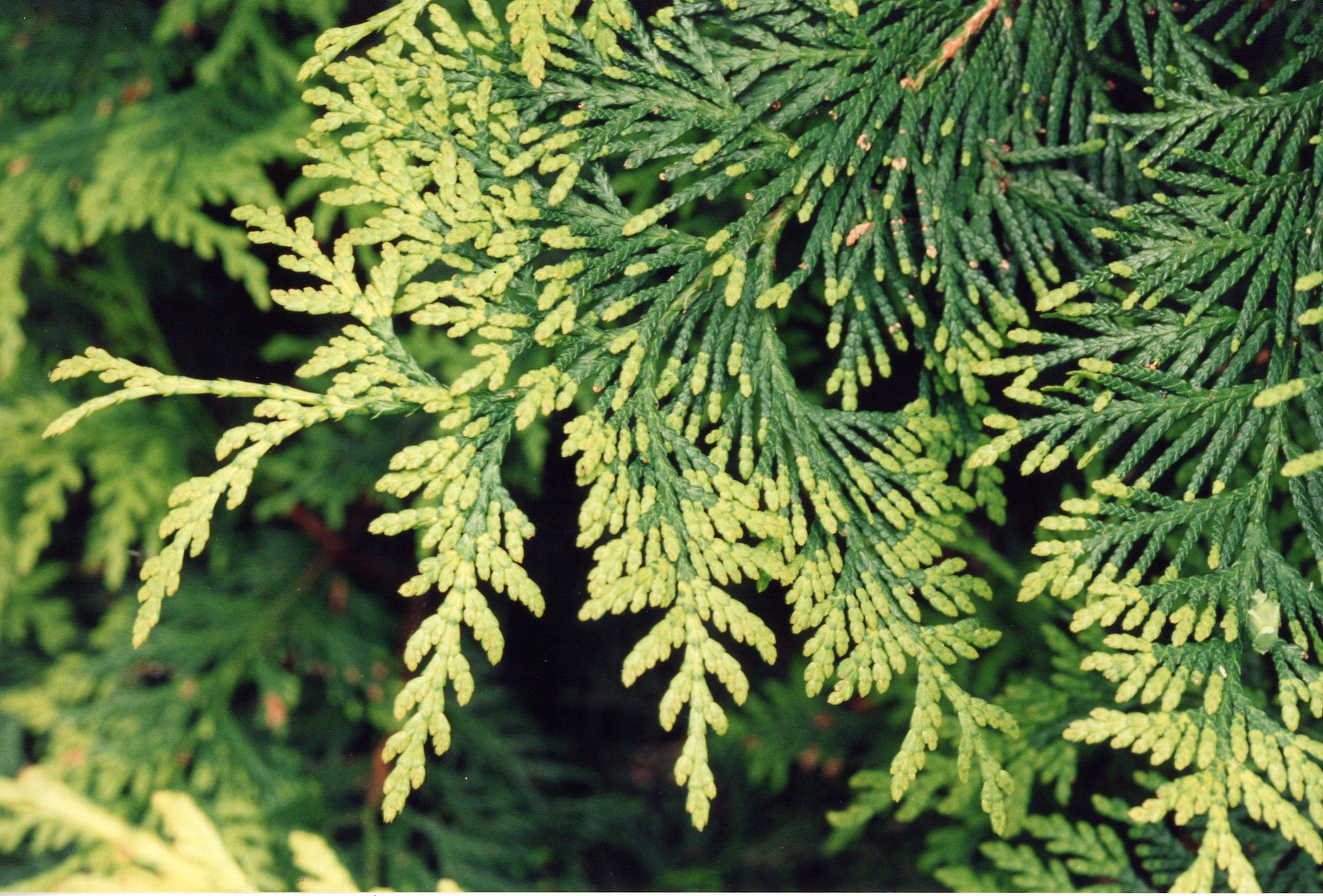Western Red Cedar VS Eastern Red Cedar: Is Eastern Red Cedar Good For Decking?
Native to western North America, the red cedar (Thuja plicata) is a popular choice for landscaping and fencing. Eastern red cedar (T. virginiana), which is native to eastern North America, has also been widely used in forestry and agriculture because of its resistance to insects and disease.
Although both species are commonly called “cedar”, they are two different plants with different characteristics. This blog post will compare the two types of cedar and discuss their pros and cons.

There are many different kinds of cedar trees.
Two of the most common types are the western red cedar and the eastern red cedar. However, these names can create confusion because they are actually quite different species, even though many people use them interchangeably.

The Western Red Cedar
The Western Red Cedar is native to western North America and can be found from Alaska all the way down to California. It grows in coniferous forests at higher elevations where it gets up to 100 feet tall and lives for about 250 years before fully maturing. They are often harvested for their high-quality wood that can be used for lumber or decorative items like furniture and carving blocks.
Like most conifers, they have needle-like leaves and produce small wind-pollinated cones. Their cones are typically less than an inch long. The trees grow at a fairly slow pace since they tend to live in harsh environments. Because of this, they have very strong wood that is resistant to rot and decay.
History of western red cedar
The western red cedar is a tree which can be found in North America.
Western red cedar has been used by Native Americans for centuries, due to its abundant nature, it was used for building large homes and hunting for many generations.
The wood of the western red cedar is particularly strong and durable, making it extremely useful for building materials.
It also happens to have excellent insect resistance capabilities, this makes the wood extremely desirable for craftsmen as well as builders.
Qualities of the western red cedar
The qualities of the western red cedar are quite unique among trees. It is known for its strength and durability, making it an excellent choice for building materials such as boards, planks, and shingles.
The wood also has a very high resistance to insect infestations and decay. In addition, the wood has beautiful color tones ranging from light to dark red – making it a popular material for furniture and decorative items.
Make use of western red cedar
There are a wide variety of uses for the western red cedar. It is commonly used in exterior construction applications such as siding, decking and fencing.
It can also be carved into decorative items like furniture and flooring, thanks to its attractive color tones and beautiful grain patterns. And lastly, it can be made into pieces of art by talented craftsmen and woodworkers who recognize its unique beauty.
The Eastern Red Cedar
The Eastern Red Cedar is native to the eastern United States and can be found from Minnesota down to Texas and into Florida. It grows in a variety of habitats but is most commonly found in dry, open areas like fields or hillsides. They are much smaller than Western Red Cedars, only growing to about 30 or 40 feet tall.
They also have needle-like leaves and produce small cones, but their cones are usually less than half an inch long. The Eastern Red Cedar trees grow at a much faster rate than their western cousins. As a result, their wood is not as strong and is more susceptible to rot and decay.

History of eastern red cedar
The eastern red cedar is a tree that can be found in North America.
Eastern red cedar has been used by Native Americans for centuries, due to its abundant nature, it was used for building large homes and hunting for many generations.
The wood of the eastern red cedar is particularly strong and durable, making it extremely useful for building materials.
It also happens to have excellent insect resistance capabilities, this makes the wood extremely desirable for craftsmen as well as builders.
Qualities of the eastern red cedar
The qualities of the eastern red cedar are quite unique among trees. It is known for its strength and durability, making it an excellent choice for building materials such as boards, planks, and shingles.
The wood also has a very high resistance to insect infestations and decay. In addition, the wood has beautiful color tones ranging from light to dark red – making it a popular material for furniture and decorative items.
Make use of eastern red cedar
There are a wide variety of uses for the eastern red cedar. It is commonly used in exterior construction applications such as siding, decking and fencing.
It can also be carved into decorative items like furniture and flooring, thanks to its attractive color tones and beautiful grain patterns. And lastly, it can be made into pieces of art by talented craftsmen and woodworkers who recognize its unique beauty.
Differentiating between Cedars and Junipers
For many people, cedar trees and juniper trees are one in the same. However, there are a few key differences between these two types of trees. Cedars belong to the Cedrus genus while junipers belong to the Juniperus genus.
Cedars tend to be larger than junipers and have a more pyramid-like shape. Junipers are more shrub-like in appearance and only grow to about 10 or 15 feet tall.
The leaves of cedars are attached to the branches with short stalks while the leaves of junipers are directly attached to the branch. Cedar leaves also tend to be much softer than juniper leaves.
Lastly, cedars produce large woody cones, while junipers produce smaller, berry-like cones.
/difference-between-cedars-and-junipers-4165305_FINAL-8f376b133871469bac2617d95031900f.png)
The Advantages and Disadvantages of the Eastern Red Cedar
The Eastern Red Cedar has a few key advantages over the Western Red Cedar. Firstly, it is much easier to find and harvest due to its wide range and abundance in the wild. Secondly, it grows at a much faster rate, which means that it can be used for lumber or other wood products much sooner.
However, there are also some disadvantages to using Eastern Red Cedar. Its wood is not as strong or durable as the Western Red Cedar, meaning that it is more likely to rot or decay over time. Additionally, the Eastern Red Cedar produces a large amount of pollen, which can be problematic for people with allergies.

The Advantages and Disadvantages of the Western Red Cedar
The Western Red Cedar has many advantages over the Eastern Red Cedar. It grows in a wider variety of habitats, meaning that it can be found in areas with harsher climates and more rugged terrain. Additionally, its wood is much stronger and more durable than the Eastern Red Cedar.
However, there are some disadvantages to using Western Red Cedar as well. Its slower growth rate means that harvesting the trees for lumber or other wood products takes longer than it does with the Eastern Red Cedar. Furthermore, harvesting Western Red Cedars can have negative effects on the environment since they tend to grow in fragile ecosystems such as wetlands or old-growth forests.
So which is better: western red cedar or eastern red cedar?
There is no clear winner when it comes to comparing western red cedar vs. eastern red cedar. Both are valuable trees with unique qualities that make them suitable for different purposes.
Western red cedars have strong and durable wood that is often used for lumber, furniture, and carving blocks. They also tend to grow at a slower pace in harsher environments, making them more resistant to rot and decay than species like the Eastern Red Cedar.
Meanwhile, the Eastern Red Cedar has fast-growing wood that can be used for various applications including fencing, roofing shingles, or decorative items. It also tends to grow well in dry and open areas, making it a good choice for landscapes or fields.
Ultimately, both cedar trees have their own unique strengths and benefits, making them an important part of the ecosystem. Whether you prefer the western red cedar or eastern red cedar will depend on your needs and preferences as a gardener or woodworker.
F.A.Q talk about Western Red Cedar VS Eastern Red Cedar:
When it comes to cedar, what is the difference between it and Western Red Cedar?
The scale of the two trees is the most noticeable distinction between them. Western Red Cedar trees are towering – some may grow as tall as 200 feet with trunks as thick as 10 feet. Northern White Cedar trees are far smaller and thinner than its southern counterparts, reaching heights of around 50 feet and trunk diameters of approximately 2 feet.
Which kind of cedar is the best?
The red cedar, often known as western red cedar, is the most commonly used kind of wood for construction materials. Lightness, resilience to insects, wetness, and decay, as well as its distinctive red color and fragrant scent, are the primary reasons for its use in construction.
Is Western Red Cedar an useful wood species?
In addition to being a hardy and adaptable species, western red cedar may be utilized in a broad range of exterior and interior construction applications. It is one of the most expensive conifers on the planet because of the distinctive color, texture, and durability of the wood it produces.
What kind of cedar has the most aromatic scent?
Because of its fragrant natural oils, most people refer to this wood as “aromatic cedar,” and they use it to line closets and hope chests in order to keep insects out of them.
Conclusion:
Western red cedar and eastern red cedar are both popular types of cedar, but they have different properties. Both have their pros and cons, so it’s important to understand the differences before you make a purchase. If you’re still not sure which type of cedar is right for you, contact us and we can help you decide. Thanks for reading!
And this article Westernencounters.com will help you answer questions about Western Red Cedar VS Eastern Red Cedar:
- white cedar vs red cedar
- white cedar vs red cedar siding
- white cedar vs red cedar trees
- red cedar vs western red cedar
- eastern red cedar wood uses
- eastern red cedar lumber
- eastern red cedar pruning
- is eastern red cedar good for decking



























